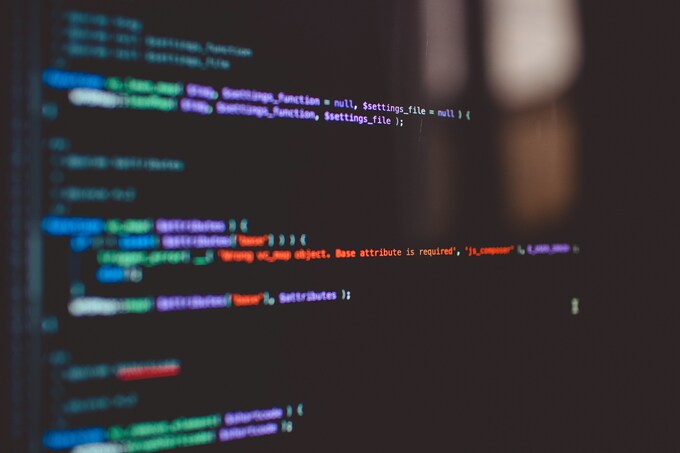In the fast-paced world of modern web development, staying ahead of security threats is paramount. Enter webhooks: powerful tools that allow seamless communication between applications, but also pose risks if not implemented securely. In this blog post, we dive into the realm of Laravel – a popular PHP framework known for its robust security features – and explore the imperative need for secure webhooks in safeguarding user data. Get ready to embark on a journey towards enhancing your Laravel projects with foolproof webhook security measures!
Understanding Webhooks and Their Importance in Modern Web Development
Webhooks serve as crucial bridges between applications, enabling real-time data exchange and automation of processes. In essence, they are HTTP callbacks triggered by specific events, allowing one application to notify another about a particular occurrence. This seamless communication is invaluable in modern web development, streamlining workflows and enhancing user experiences.
The significance of webhooks lies in their ability to eliminate the need for constant manual checks or polling for updates. Instead, developers can rely on webhook notifications to initiate actions based on predefined triggers. This not only boosts efficiency but also ensures that information is promptly synced across platforms without delays or human intervention.
In a digital landscape where speed and accuracy are paramount, harnessing the power of webhooks can revolutionize the way applications interact with each other. By understanding this technology’s role and importance in modern development practices, developers can unlock new possibilities for creating dynamic and responsive systems.
The Basics of Laravel and Its Built-in Security Features
Laravel, a popular PHP framework known for its elegant syntax and powerful features, offers developers a solid foundation for building secure web applications. With built-in security features like CSRF protection, authentication and authorization mechanisms, Laravel prioritizes the safety of user data.
When it comes to securing webhooks in Laravel, understanding these basic security features is crucial. CSRF protection helps prevent cross-site request forgery attacks by generating unique tokens for each request. Authentication ensures that only authorized users can access sensitive information within the application.
Authorization plays a key role in determining what actions different users are allowed to perform based on their roles and permissions. By leveraging these built-in security measures effectively, developers can enhance the overall security posture of their Laravel applications and protect user data from potential threats.
Why Secure Webhooks are Essential for Protecting User Data
Secure webhooks play a crucial role in safeguarding user data on websites and applications. By ensuring that the communication between different systems is encrypted and authenticated, secure webhooks help prevent unauthorized access to sensitive information.
Without proper security measures in place, malicious actors could intercept webhook payloads containing valuable user data, leading to potential data breaches and privacy violations. Implementing secure webhooks in Laravel adds an extra layer of protection against such threats, giving users peace of mind knowing their personal information is safe.
In today’s digital landscape where cyber attacks are becoming increasingly sophisticated, prioritizing the security of webhooks is more important than ever. Whether it’s financial transactions, login credentials, or personal details, protecting user data should always be a top priority for developers and businesses alike.
Step-by-Step Guide to Implementing Secure Webhooks in Laravel
To implement secure webhooks in Laravel, start by generating a unique secret key for each webhook endpoint. This key will be used to verify the authenticity of incoming requests. Next, set up HTTPS on your server to encrypt data transmission and prevent unauthorized access.
Then, create a dedicated route in your Laravel application to handle webhook requests. Use Laravel’s built-in middleware for authentication and validation to ensure that only valid requests are processed. Implement request validation using Laravel’s Form Request classes to validate incoming data against defined rules.
Utilize Laravel’s event broadcasting feature to trigger events when webhook requests are received. This allows you to decouple the processing logic from the actual request handling, improving scalability and maintainability. Log all webhook activity for auditing purposes and monitor any suspicious activity closely.
Emphasizing the Importance of Prioritizing Security in Web Development
Emphasizing the importance of prioritizing security in web development cannot be overstated. With cyber threats on the rise, safeguarding user data should be a top priority for any developer. By understanding webhooks and implementing secure practices within Laravel, you not only protect your users but also build trust and credibility for your platform.
Remember, security is not a one-time task but an ongoing process that requires constant vigilance and updates. Stay informed about the latest security trends, keep your dependencies up to date, and always test your webhook implementations thoroughly.
By following the steps outlined in this guide and staying proactive about security measures, you can create a robust and secure web application that instills confidence in your users. Prioritizing security from the start will save you time, money, and potential headaches down the line.
So go ahead, implement secure webhooks in Laravel today and take control of your website’s safety!
